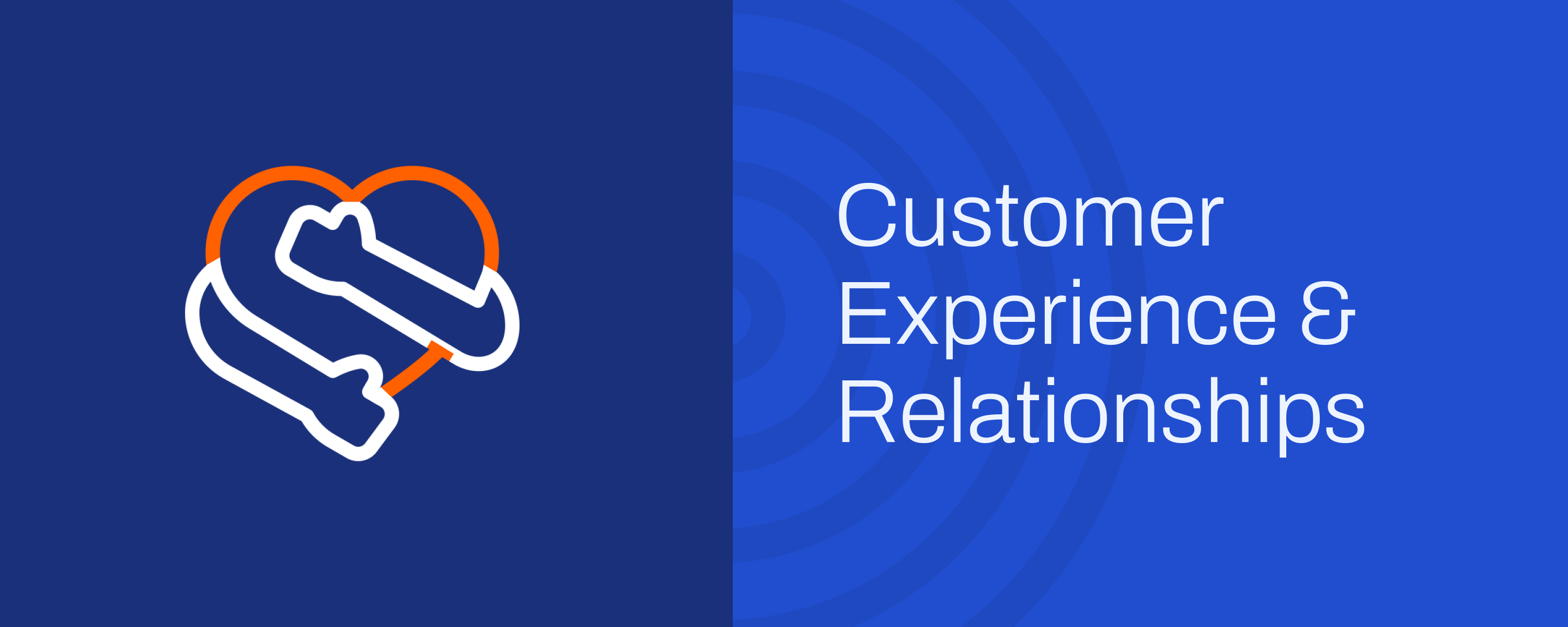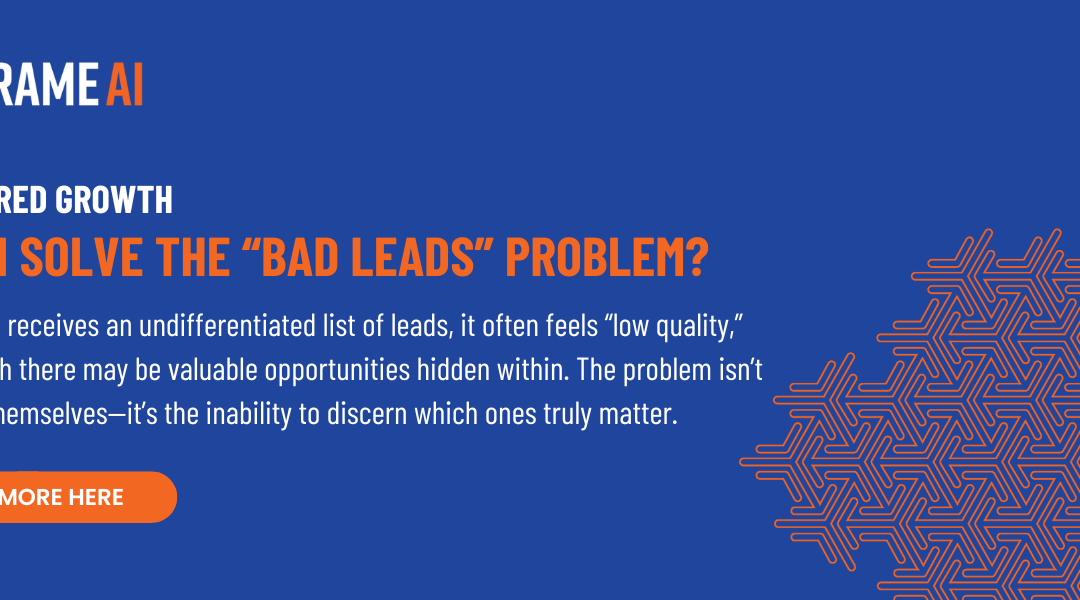When Things Go Well…
Think of some of your favorite companies. What keeps you coming back?
Big shout out to Chewy. I recently changed my shipping address but then saw an email confirmation indicating my auto-ship order for my dog Chief’s food was en route to my old address. A quick chat with Ross later, and another bag was on its way to me at no extra charge or hassle.
When Things Go Poorly…
Now think about companies you’ve turned your back on.
I experienced a major service failure with an event software company ( I won’t name names). Days before a big event, calendar invites hadn’t been automatically emailed to RSVPs as expected. I knew this was going to hurt our live attendance rate.
I opened a Support chat and got an auto-responder telling me they would attempt to get back to me within 72 hours. *Awesome, by then, I’ll be scrambling to explain low turnout to my boss. *
Then I called. The well-meaning agent asked me a litany of scripted questions. “Have you tried ___ ? What about ___ ?” *Uhh yes, I am quite certain I’ve tried everything the docs suggest. *
I escalated to a harried manager and we had the same discussion. She seemed over it. No suggested workaround, no attempt to make my life easier. But none of this was her fault.
It was clear that the company had made no attempt to make her life easier. The company was telling me loud and clear that their process was more important than my problem. The agent and her manager were just messengers tasked with keeping me at bay.
Fast-forward to a week following the doomed event. I got a mass email citing a bug that caused a similar problem for hundreds of customers with a generic apology that was too little and too late.
The Customer (Support) Experience
What made a world of difference in the above scenarios?
The customer support experience.
According to Zendesk, 78% of companies agree that service agents play a vital role in customer retention. Zendesk also says that 68% of customers will forgive companies for a mistake after receiving excellent service.
Whether you’re a SaaS company with tens of thousands of freemium customers, an OEM with multi-year enterprise contracts, or a retailer, Support may be the only kind of human interaction that your company has with your customers. Support plays a starring role in your customer experience and must be treated as such.
Gartner says that 40% of customer service organizations will become profit centers and de facto leaders in digital customer engagement by 2025. Companies with winning customer experiences invest in Support people, stronger leadership, and technology that empowers them to shine.
Invest in Developing Support People
Support typically sees the highest employee turnover of any team in an organization, and it figures. If you felt like your job was to get yelled at all day and had no control over the complaints you were fielding, you’d seek greener pastures before too long, right?
Turnover is also expensive. The Human Resources Institute estimates that turnover costs between $10k and $15k for every frontline agent.
It’s easy to get burned out quickly, facing frustrated customers all day. But another leading cause of burn-out is that agents lack agency (pun intended) over their own destiny.
Imagine being forced to read from a clumsily formal script instead of just being the best version of yourself. Or aggressively “setting expectations” when you know there must be a better way to solve the problem. Rather than insist on script adherence, the best Support teams empower agents to do two things — (1) be human and (2) creatively problem-solve.
Being human is not only more comfortable, but heavily scripted interactions can be a big turn-off for customers. We found that when Support agents follow a script to the letter, organic customer satisfaction scores are 17% lower. Furthermore, customers are 20% less likely to thank agents for their help during a heavily scripted interaction.

Allowing agents to solve problems creatively puts them more in control of the outcomes they’re accountable for and improves customer experience. It also builds morale by enabling agents to develop new skills that can become career advancement opportunities. And it’s a win-win for the company, because it also improves team efficiency —we found that case re-open rates are 32% lower when Support agents offer a workaround.
Ross at Chewy didn’t need to recite a company policy or ask his manager if he was allowed to help me. Chewy knows it’s way less expensive to send me another bag of food than to lose me as a customer — and they won’t because I know I can count on amazing customer service every time.
Company and Support leadership trusted Ross to make the right call, and he did. And I’ll bet he’s much more excited to go to work tomorrow than the agent at the event software company.
Invest in Stronger Support Leadership
Strong Support leadership helps a team of skilled, effective, and empathetic agents maximize their full potential as stewards of customer experience and individuals. But too many companies and customer experiences are floundering without it.
According to Zendesk, 40% of companies say customer service is not owned by a C-suite exec at their organization. Another 46% say their organization does not have a 3-year strategic plan for customer service.

Two of the biggest tell-tale signs that Support needs stronger leadership are as follows. First, other teams in the organization aren’t regularly exposed to the problems that Support helps solve. Secondly, Support’s cries for resources from cross-functional teams go consistently unanswered.
When Support doesn’t have a seat at the executive table, it doesn’t just hurt front-line agents. Support agents address your customers’ frustrations, provide reassurance and get in the trenches with them when it matters most — so companies that ignore Support data are basically just inviting their customers to shout into a void.
Certainly not least, Support is a gold mine of insights for Product, Engineering, Sales, Marketing, and beyond. Support is downstream of issues that arise from every dark corner of the company — your Support team doesn’t exist just to clean up messes that other teams have made once customers notice.
Support is there to help the whole company improve customer experience with the right leadership and resources.
Invest in Better Support Technology
Let’s come back to my unfortunate experience with the event software company. What could they have done better?
They indicated in their mea culpa that the same issue had affected hundreds of customers.
So while I was sweating it out in panic mode, there were hundreds more like me begging for help at the very same time. Meanwhile, the company couldn’t see that this was not an isolated incident.
They couldn’t see the smoke before the fire. Lots of escalations, finger-pointing, and churn events later, it was too late to turn around their customer experience.
But how could they have without a crystal ball or a team of analysts with superhuman case reading speed?
This is where better technology comes in and enables Support to be proactive instead of reactive. Natural language AI helps Support teams identify problematic trends fast across high volumes of unstructured case data to predict and prevent escalations and fix problems before they spiral out of control.
With the right tools, maybe the event software company’s issue would have hurt tens of customers instead of hundreds of customers. Maybe I’d still be a customer.
Better Customer (and Company) Outcomes
Better technology also empowers Support to be strategic partners to the rest of the company.
What would you rather say in your Monday afternoon meeting?
(A) “Last week, it seemed like we had a lot of cases about integrations breaking down. Can you please help us, Integrations Team?”
(B) “Last week, we had 46 cases about our Polstr integration breaking down and 37 about our Aries integration. Collectively, my team spent nearly 100 hours troubleshooting integrations, and the integration issues knocked our CSAT score down by almost 15%. Can you please help us, Integrations Team?”
As you might guess, option (B) puts you in a much stronger position to advocate for your team and your customers. Here, you’ve done a few things:
(1) You’ve described the problem more specifically — which integrations need to be fixed?
(2) You’ve quantified the cost of the issue — is this more or less expensive of a problem vs. the backlog?
(3) You’ve quantified the impact on your customer experience — is this a mission-critical fix or a nice-to-have?
Analyzing your cases with natural language AI technology empowers you with option (B) by making it easy for you to quantify and describe in detail the challenges you’re helping customers solve and their impact on your business.
Now, you’re having a very different conversation than you’d be having if you’d gone with option (A).
Support is Revenue Defense
There is little debate that customer experience is a major driver of growth. But more companies than ever are realizing that the customer support experience is the center of gravity in their customer experience.
Companies that are winning customer experience are developing their Support agents, ensuring that Support has a seat at the executive table, and investing in better technology to help Support succeed.




